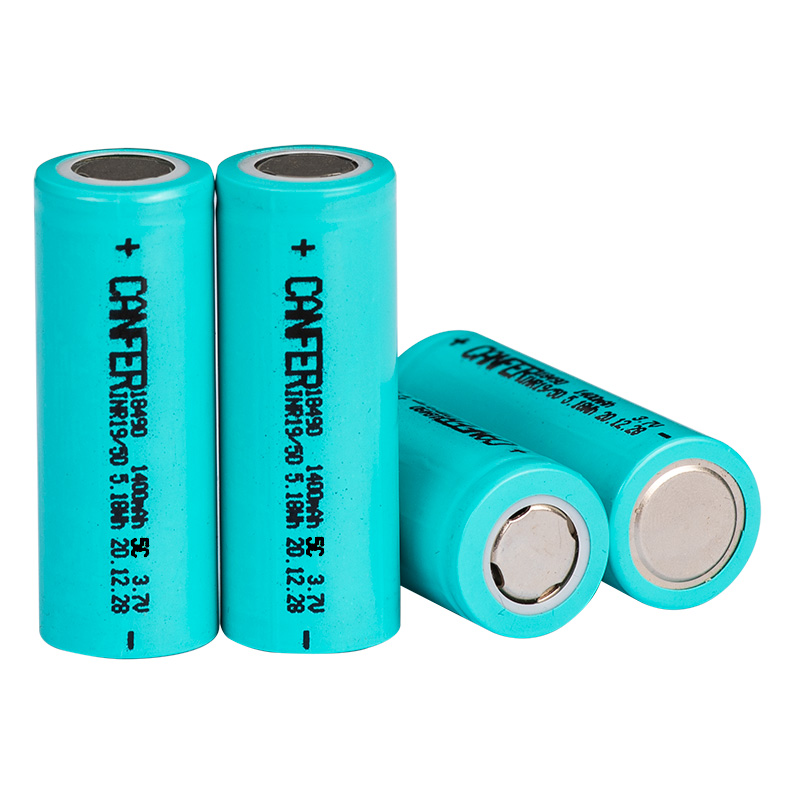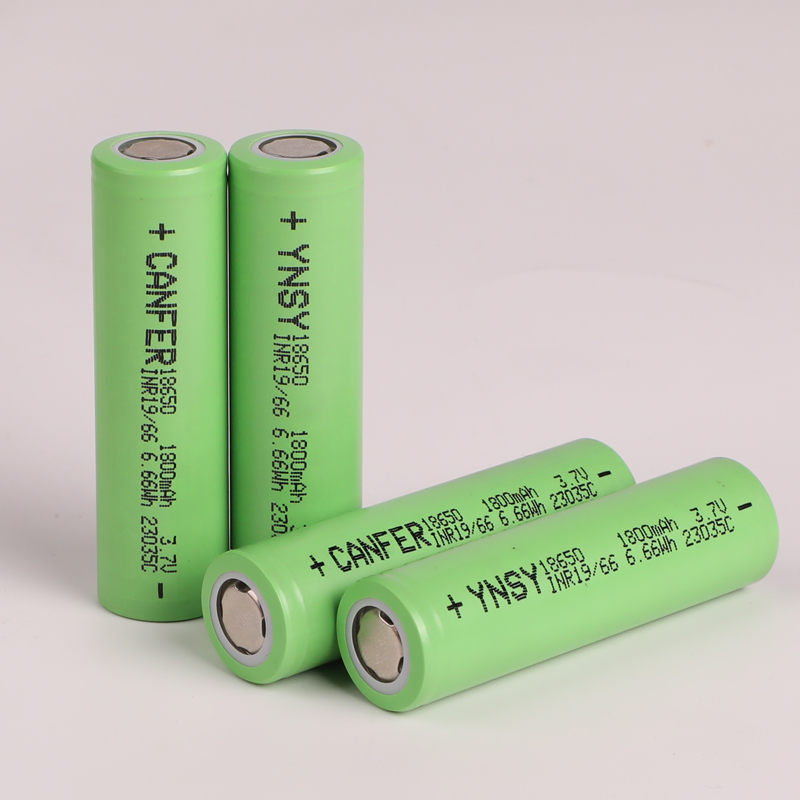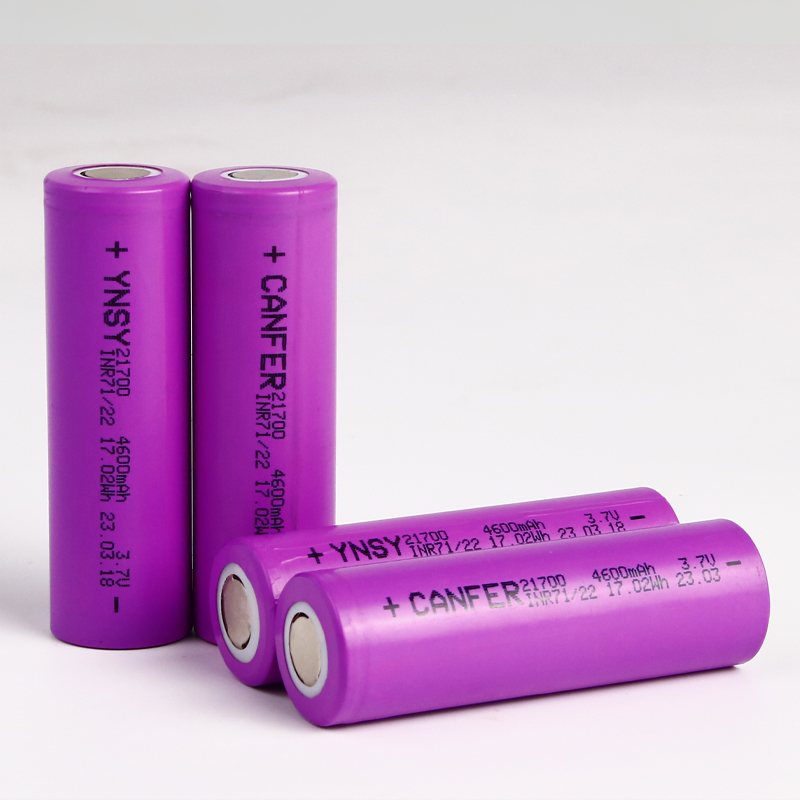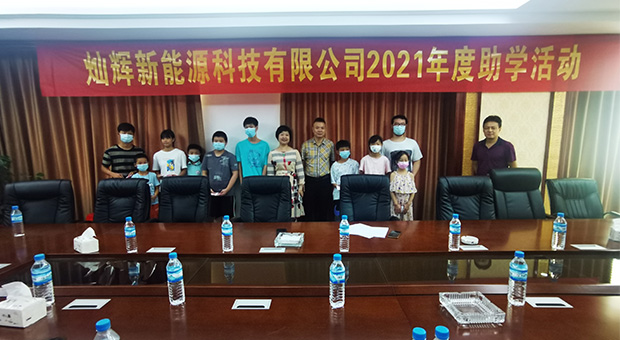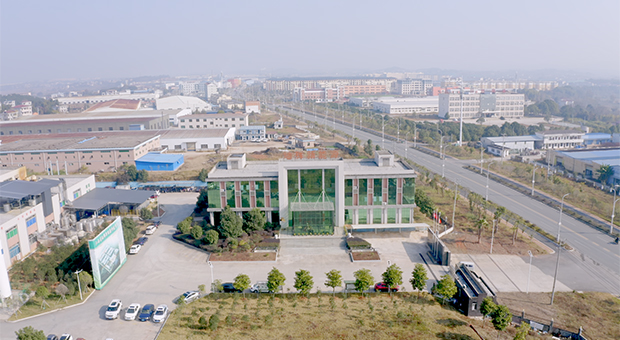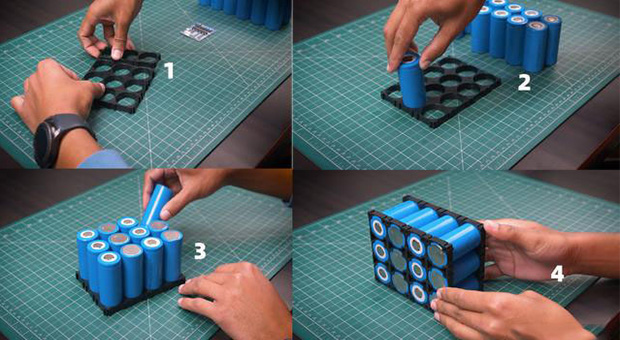Canhui New Energy Technology Co., Ltd | Clicks:935 | 2021-08-13
Differences between 18650 power batteries and regular lithium batteries
The 18650 power battery supports high-current discharge, which can reach 20 times the current capacity. The 18650 ordinary lithium battery only supports 1 times the discharge capacity, that is to say, for an ordinary 2600mAh battery, the maximum discharge current is 2600mAh.
The capacity of the 18650 power battery is generally twice that of the ordinary battery. It is estimated that it will not exceed 2000mAh. most. Usually 1000mAh~1800mAh.
The working voltage of general power batteries is lower than that of ordinary lithium batteries. The maximum charging voltage of ordinary lithium batteries is 4.2V, and the maximum charging voltage of power lithium batteries is about 3.65V. The rated voltage of ordinary lithium batteries is 3.7V, and the rated voltage of power lithium batteries is 3.2V.
1. The positive electrode and positive electrode material of the power lithium battery 18650 are smaller than the ordinary 18650 lithium battery (increased specific surface area and accelerated chemical reaction speed), and the membrane material and electrolyte have better electrical conductivity.
The 2C18650 power lithium-ion battery also produces more electrode lugs in the anode and negative electrode than the ordinary 18650 lithium battery (reducing the internal resistance of the electrode lugs and meeting the larger current).
The 18650 power battery supports high-current discharge, which can reach 20 times the current capacity. 18650 ordinary lithium batteries can only support 1 times the discharge capacity. , The capacity of the 18650 power battery is generally less than twice the capacity of the ordinary 18650 lithium battery.
The maximum charging voltage of ordinary lithium batteries is 4.2V, and the maximum charging voltage of power lithium batteries is about 3.65V. The rated voltage of ordinary lithium batteries is 3.7V, and the rated voltage of power lithium batteries is 3.2V. Lithium battery is a battery composed of metal lithium or lithium alloy as negative electrode material and non-aqueous electrolyte solution. In 1912, Gilbert N first developed lithium metal batteries. Lewis proposed and studied it. In the 1970s, M. Whittingham proposed and began to study lithium-ion batteries. Due to the very active chemical properties of lithium metal, the processing, storage and use of lithium metal are very demanding. Therefore, lithium batteries have not been used for a long time. With the development of science and technology, lithium batteries have become the mainstream.
Lithium batteries can be roughly divided into two categories: metal lithium batteries and lithium ion batteries. Lithium-ion batteries do not contain metallic lithium and are rechargeable. Lithium metal batteries, the fifth generation of rechargeable batteries, were born in 1996. Its safety, specific capacity, self-discharge rate and cost performance are superior to lithium-ion batteries. Due to their own high-tech needs, only a few countries currently produce such lithium metal batteries.
1. The positive electrode and positive electrode material of the power lithium battery 18650 are smaller than the ordinary 18650 lithium battery (increased specific surface area and accelerated chemical reaction speed), and the membrane material and electrolyte have better electrical conductivity.
The 2C18650 power lithium-ion battery also produces more electrode lugs in the anode and negative electrode than the ordinary 18650 lithium battery (reducing the internal resistance of the electrode lugs and meeting the larger current).
The 18650 power battery supports high-current discharge, which can reach 20 times the current capacity. 18650 ordinary lithium batteries can only support 1 times the discharge capacity. , The capacity of the 18650 power battery is generally less than twice the capacity of the ordinary 18650 lithium battery.
The maximum charging voltage of ordinary lithium batteries is 4.2V, and the maximum charging voltage of power lithium batteries is about 3.65V. The rated voltage of ordinary lithium batteries is 3.7V, and the rated voltage of power lithium batteries is 3.2V.
Lithium battery is a battery composed of metal lithium or lithium alloy as negative electrode material and non-aqueous electrolyte solution. In 1912, Gilbert N first developed lithium metal batteries. Lewis proposed and studied it. In the 1970s, M. Whittingham proposed and began to study lithium-ion batteries. Due to the very active chemical properties of lithium metal, the processing, storage and use of lithium metal are very demanding. Therefore, lithium batteries have not been used for a long time. With the development of science and technology, lithium batteries have become the mainstream.
Lithium batteries can be roughly divided into two categories: metal lithium batteries and lithium ion batteries. Lithium-ion batteries do not contain metallic lithium and are rechargeable. Lithium metal batteries, the fifth generation of rechargeable batteries, were born in 1996. Its safety, specific capacity, self-discharge rate and cost performance are superior to lithium-ion batteries. Due to their own high-tech needs, only a few countries currently produce such lithium metal batteries.
The 18650 type lithium battery is a lithium battery commonly used in electronic products. It is often used as the core of laptop batteries. The model is defined as follows: For example, type 18650, that is, the battery has a diameter of 18 mm, a length of 65 mm, and a cylindrical shape.
Compared with lithium cobalt oxide, lithium iron phosphate has the following advantages:
1: Safer, overshoot and over discharge will not cause explosion, and the life of leakage is longer, and it can be cycled more than 1000 times in normal use
2: Large magnification, 2C charge and 10C discharge, will not heat up, explode, leak liquid, and will not affect the lifespan, but the lithium iron phosphate version 18650 has a low monomer voltage, and is mostly used for electrical appliances that work with high current. There are mainly 26650 pcs of power cylindrical lithium-ion batteries because their capacity is greater than 18650 pcs.
Working temperature: -20°C-50°C, the best working temperature is 20°C-40°C, which is close to the comfortable temperature of human body.
Next:None

 +86-13318055659
+86-13318055659
